The social milieu of Bali is a bizarre swirl of ancient, local practices and unhinged Westerners. You tell me: is this extreme faddiness or am I just being a fuddy-duddy? I thought I saw all the barf-o-matic trendy fads in Southern California: new age, old age, or just a pathetic age, but no. Only in Bali:
The above discussion raises the question: What type of people are drawn to Bali? Thanks to https://travel.eatsandretreats.com/five-types-travelers-things-to-do-in-bali/, they have identified five kinds of Bali travelers: 1.) Luxury-Lover and 2.) TrendsetterTemple-Hopper and Culture-Chaser 3.) Cuisine-Explorer and Healthy-Foodie 4.) Soul-Searcher and Yoga-Fan 5.) Thrill-Seeker and Adventure-Lover
But there is one other type of tourist that does not fit neatly into one of the five categories above: medical tourists. Westerners looking for reduced-cost, high-quality medical treatment have increasingly flocked to many Third World countries — from Mexico to India to Thailand and beyond. Medical tourism is a big money maker for these countries, both from regular tourist dollars spent, to the sale of big-ticket medical items ranging from dental work; surgery (kidney transplants to breast implants); to specialized treatment plans. Some countries now have government ministries, expansive public investments, or public-private combines all focused on drumming up foreigners to visit for medical care. The Western tourists get the sweetest thing that humanely can come out of terrible conditions: superlative medical care at bargain basement prices; combined with a grand tour of some fabulous tourist spot.. In fact, the treatment charges and country tour costs combined are commonly still less than the cost of boring treatment in the USA. Get dental implants (or hernia surgery) and tour Thailand and save money at the same time? — a New Yorker’s dream (“never pay retail!”) .
I Am A Medical Tourist – Meet My New Treatment Team
Who comes to Indonesia as a medical tourist? Me. I have all the aches, pains and weary bones as if I have been shot out of a cannon. Naturally, I sought out tribal treatments once I arrived here in this herbal crossroads of South East Asia. Bali is a traditional healing honey pot. I got me three, count ‘em 3, traditional healers under my belt already. Traditional healers are called “Balians”, not to be confused with the general term, “Balinese” which refers to all things Bali. My treatment at the hands of Balians has been a body and soul changing experience. In contrast, I also went to see some Bali medical floozies, but they gave me the bum’s rush. Translation: I was concerned my reliance on traditional healers was not realistic, so I sought out medical doctors for a second opinion. The local white-coat physicians here told me stuff that completely contradicted my diagnosis and treatment plan from Kaiser Health Care California: the medical advice I got in San Diego, just a few ago. Watch this: I had groin pains and was diagnosed with a hernia by my entry-level medical floozie (primary physician – M.D). I was referred to a surgeon for cut-and-paste options (surgery). I told traditional healer Pak Mangku (see below) that I had a hernia. He laughed and shook his head. One sonogram later and sho’ enuf the doctors declared I had no hernia. After that, I high-tailed it back to my Balian diviner-herbalists. Below is my hoary crowd of healers:
Tri uses acupuncture as the basis of his treatment. However a session with him includes acupuncture based on Hindu chakra meridians not the standard issue Chinese meridians. Plus, Tri is fervently praying the whole time; swinging and suspending crystals on gold chains just above my body; reiki treatment; covering my chakra point with small stones with some ointment; incantations; sweeping gestures over my body with his hands; and God only knows what else. After treatment, Tri gives me potions and poultices (pastes) to ingest or apply topically. These additions are largely made from plants he grows back in his village Just to have a New York moment – Tri does not charge me for the potions and lotions. I give him no extra money — when was the last time your doctor or naturopath gave you treatment meds at no cost?- only in Bali! Treatments by Tri are powerful moving experiences — very curative.
Djero uses extreme, powerful massage-type treatment. I think it would be called trigger-point, or deep tissue massage, or both. Frankly, the treatments have painful moments,but it is the pain of release. Somehow the word forgiveness comes to mind but I do not know if I am forgiving Djero or myself. Djero’s intense treatments are very similar to Rolfing, which I have undergone. Honestly, I was a little stiff and sore the day after, but the curative resort was very wonderful.
Enter Pak Mangku – My Primary Physician
Below is my main diviner-herbalist, Pak Mangku. Dr. Mangku uses trigger-point deep massage as a starting point. His bag of tricks includes using power rings (think Green Lantern, and I am NOT being sarcastic), special ointments, and magic that I do not understand. Watch this: my guide and friend, Komang, translates between Pak Mangku and me. I had previously told Komang I was planning a trip to the distant major Bali town of Singaraja. The next time I see Pak Mangku he asks, through Komang the translator: “Are you going to Singaraja?” How did he divine that pearl of an idea?I figured that Komang told Pak Mangku, which Komang denies. Okay. On my next visit, I had been recently preoccupied planning a trip to the USA for business reasons – details not important. I told NOBODY about my emerging plans to return to San Diego — not Komang, not nobody. Sure enough, in the middle of treatment; Pak Mangku is throttling my blood-clotted leg with his massage treatment. Out of nowhere, Pak Mangku pipes up: “You are going to your home country soon?” I had to confess to Pak Mangku my undisclosed plan to go to the USA before the end of the year. How did Pak Mangku divine that? Lucky guess?
Pak Mangku has other magic. For example, he uses the rings as energy amulets. I feel warmth emanating from the ring as he presses it against an injured part of my body. That’s all I know. The results of his treatment: an unbelievable healing experience.
This Pak Mangku gift ring is a doozy. You will also notice the colored string bracelets. At selected Hindu Temples, parishioners (is that the right word?) receive a bracelet for giving offerings and receiving the blessing of holy water and rice from the Hindu Priest. I go to a lot of Temples and ‘natch; I have three such string bracelets at jammed together in this picture.
Pak Mangku also gave me a prescription (jest) for kelapa muda bakar, the local term for grilled young coconut (not a jest). After grilling the daylights out of a coconut; the coconut administrator cuts out a top piece to open it. This technician sizes me up and adds the appropriate amount of honey, ginger and some spices to the boiled coconut water. A thick lemongrass stalk serves as the stirrer. Delicious medicine — and it works! .
In all of these treatments, there is hands-on energy being transmitted and two way communication between the practitioner and patient. This physical and psychic link between practitioner and patient is far removed in Western medicine; and only in small doses in standard acupuncture treatments, based on my experiences. My acupuncture treatments in the USA had a clinical coldness. Commonly, the acupuncturist would put in the needles and leave the room for the duration. The Chinese acupuncture treatments were beneficial but had a clinical coldness. Not true for the Balians with a hands-on experience — if you feel, you heal!
As mentioned, “Balian” is the term for traditional healers. There are at least eight varieties of Balians, based on their gift or specializing subjects. These healers specialize in all sorts of things, including fixing or setting-up broken bones. “Tulang” in Bahasa Indonesia means bone.
- Balian manak is a woman with midwife capabilities in charge of helping other women during the process of delivering the babies (manak
- Balian tenung is a Balian who specialize in reading the future or the past and prophesying. However, Balian tenung are usually also helping people to locate a lost object and revealing a crime identity.
- Balian terang is in charge of handling the rain (rain handler). Bali is one of a kind place with hundreds of events every week, weddings, ceremonies, and parties. It won’t be very stressful when the event is held during the dry season, but in the rainy season, this can be another story. Some Balian terang even provides a guarantee to keep the venue dry throughout the sessions.
- Balian usada is the one who can cure and heal the sick. They usually have many collections of lontars (Balinese inscriptions on palm day leaves describing the natural medicines and therapies to be done toward the patients. Their house compounds also typically have a unique garden and grow many types of medicinal herbs. As the cure balian will pick some ingredients from the garden and process them to become potion called “Loloh” or it can also be turned into a mashed thick paste “Baboreh” to be smeared over the body part that has a problem.
- Balian paica is similar to balian usada, but instead of using natural ingredients as the medicine, they are using sacred family relics that have been passed down from generation to generation.
- Balian apun/ balian urat is the healer who will be able to help anyone who has a problem within their internal organ. Fixing crooked body parts, removing lumps and other obstructions, so that blood and other vital fluids flows well within blood vessels.
- Balian kebal is specialized in providing magical charms or spells to protect anyone from spiritual attack or being bulletproof and sharp weapon proof.
- Balian taksu is also known as the spirit medium. For those who want to communicate with the family or relatives who just passed away, balian taksu will be able to help you by inviting the spirits to come into his/ her body so that you can communicate with the expected soul, while the balian is in trance session.
- https://bali.com/bali-travel-guide/culture-religion-traditions/traditional-balinese-healer-balian/
Here is Something Not Seen Every Day: Train Track Therapy
Indonesian ‘s Lie on Railroad Track for “Electric” Cure
Advocates of ‘electric therapy’ lie on tracks so they can get a jolt from trains. The practice caught on after a suicidal stroke victim changed his mind upon feeling rejuvenated by the electric current. Reporting from Jakarta, Kate Lamb wrote in the Los Angeles Times, “Each afternoon, Abdul Rachman indulges in his favorite way to reduce the stresses of the working world: He sits on the railway tracks not far from home. Rachman, a 32-year-old security guard, says the unorthodox practice is intended to prolong his life, not end it. “Many people say I want to kill myself because I do this,” said the stocky man with a thick mustache, who has suffered from rheumatism and fatigue. “People can say what they want. I do it because I want to be cured.” [Source: Kate Lamb, Los Angeles Times, September 9, 2011 |^|]
“Rachman is among scores of advocates of railway “electric therapy,” a treatment some Indonesians believe cures such ailments as strokes, asthma, high blood pressure and rheumatism, not to mention a hard day at the office. The practice took off last year after a man suffering from the effects of a stroke reportedly lay down on the track in an attempt to commit suicide but jumped off after feeling rejuvenated by the oncoming train’s electric current. Now others flock to the spot near the Rawa Buaya Station in west Jakarta, along a litter-strewn riverbank that reeks of sewage. |^|
“Ignoring the makeshift bamboo fencing that’s meant to keep people off the tracks, they lie on the ground, splaying their limbs over the rails. Some lie with their necks and ankles exposed on the iron ribbons, while others like Rachman sit cross-legged gripping the rails with both hands. Believers say that as trains pass on adjacent racks, they administer a string of low-voltage electric shocks that jolt away whatever ails people. So far, at least, officials say, no one has been struck by trains. Rachman says his muscle pain is gone and that he sleeps better. Almost evangelical about the therapeutic merits, he has made daily sojourns to the tracks for three months and even knows the train timetable by heart. “It just feels so good,” he said. “If you’re tired or have rheumatism, you touch the rails and all the tiredness vanishes. Your whole body feels lighter.” |^|https://factsanddetails.com/indonesia/Education_Health_Energy_Transportation/sub6_6b/entry-4077.html
Residents Lie on a Railway Track in Rawa Buaya in Java West Province 7/13/11 Reuters/Enny

Bonus Photo: Hopi Pottery Design in Action
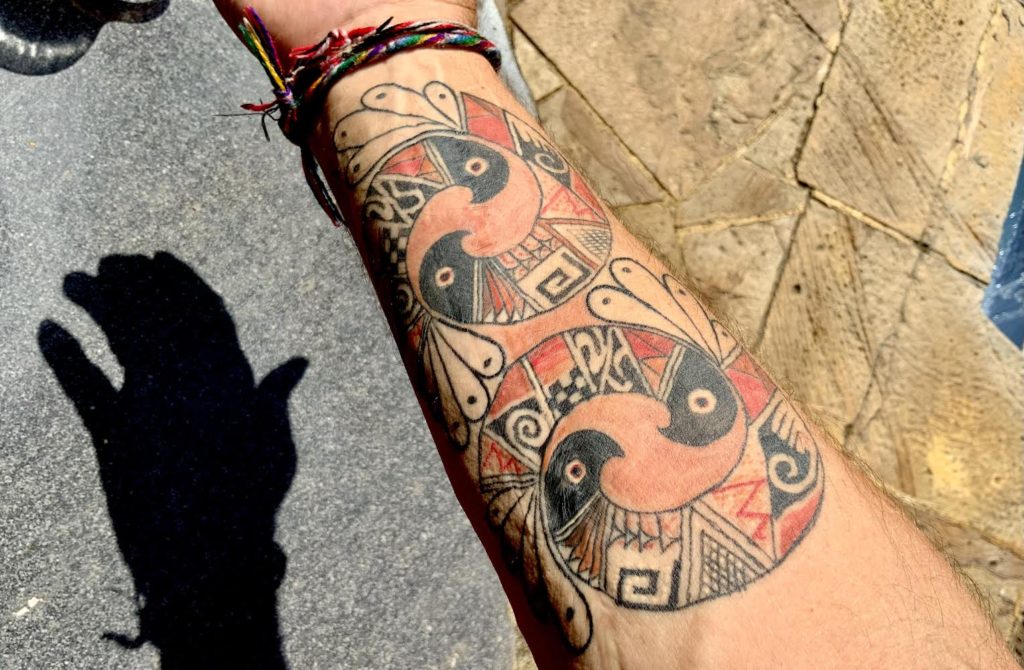
While I am taking hand photos, above is full disclosure. I will only send pic of the OTHER forearm tattoo to people who leave a comment below on anything in this post. Note: Next week, I am getting the center swirl color lightened for greater contrast. Everything is better in Bali, even the tattoos. Bali is famous for tattoos.
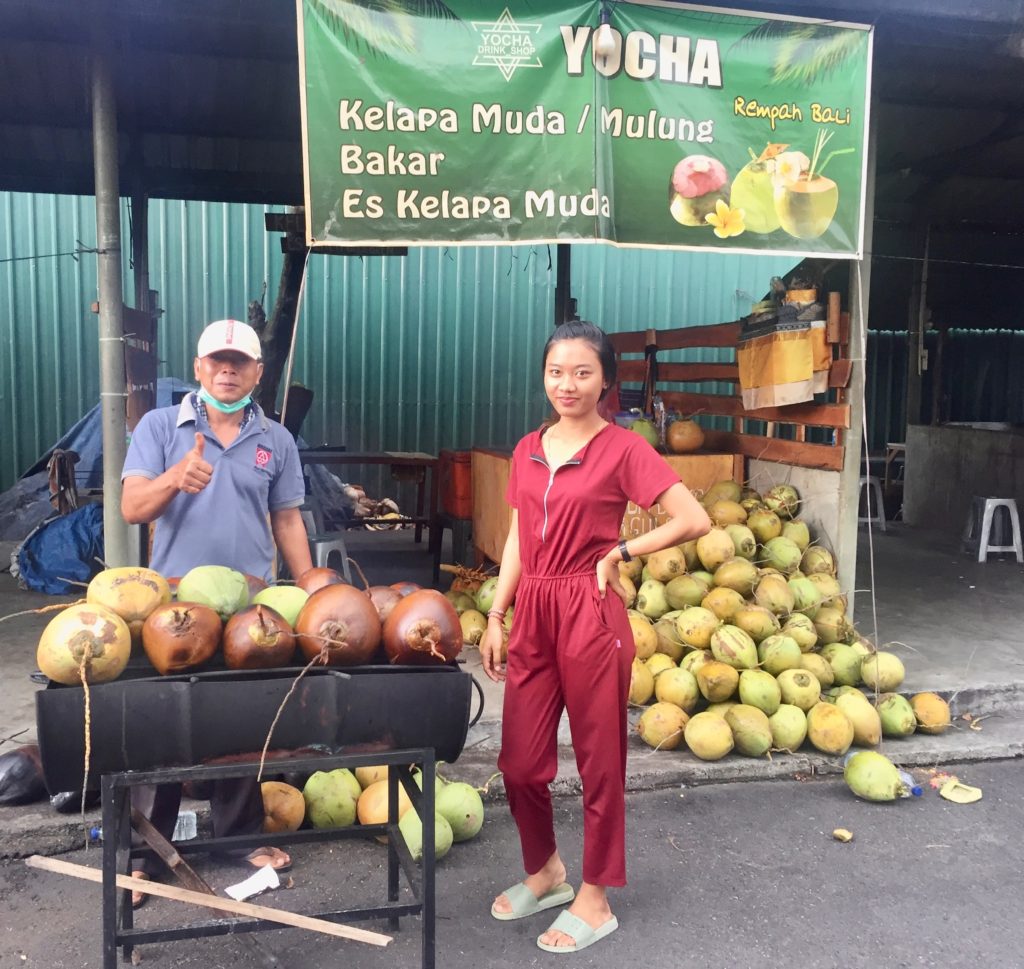

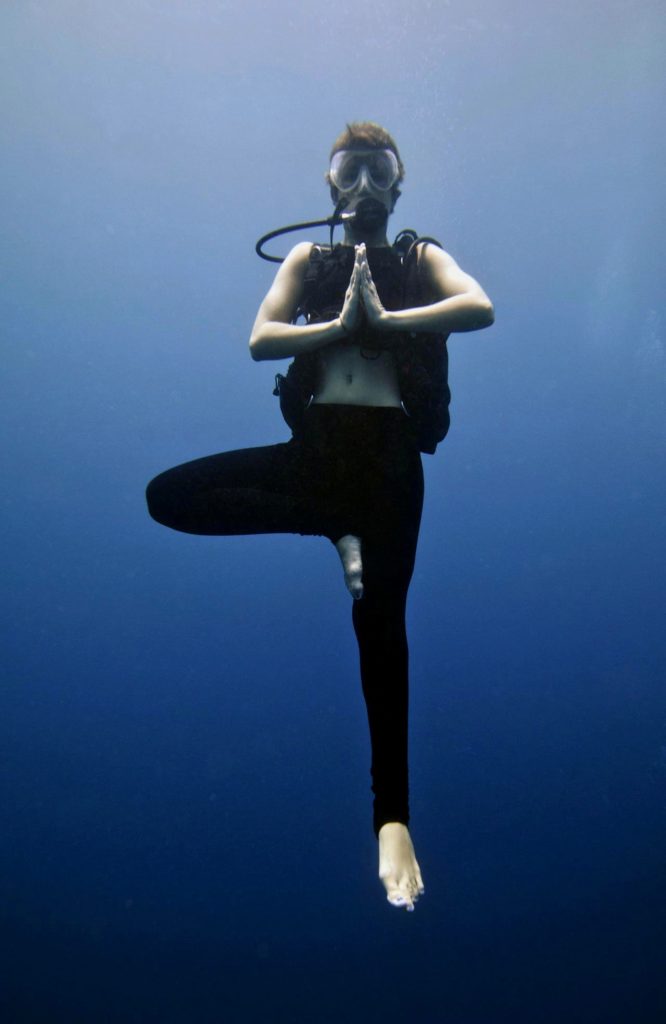
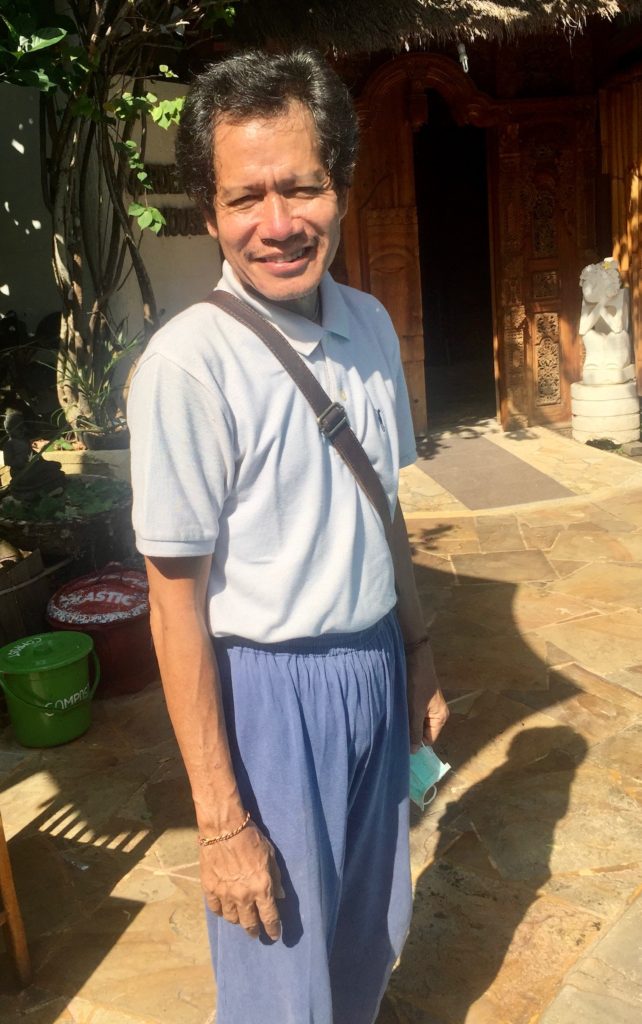
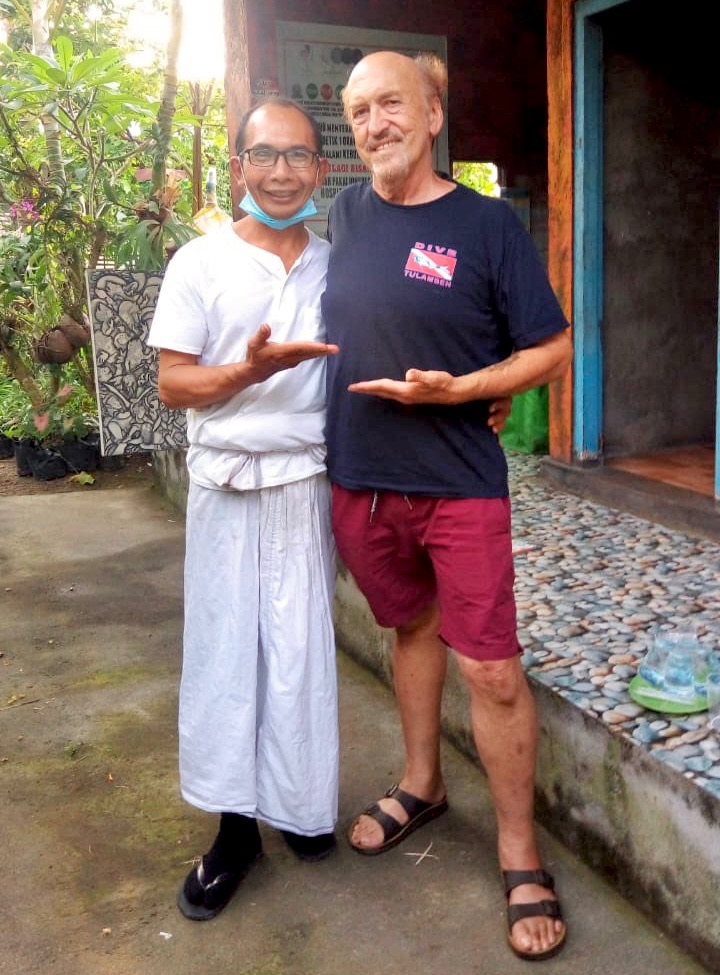
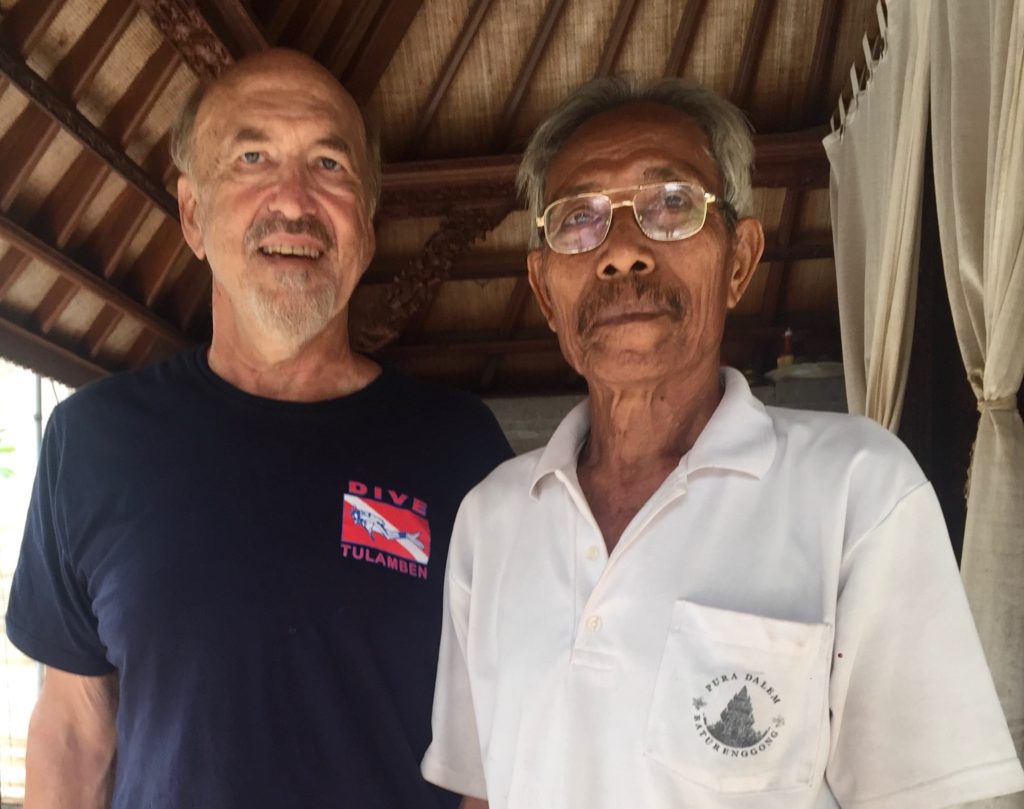
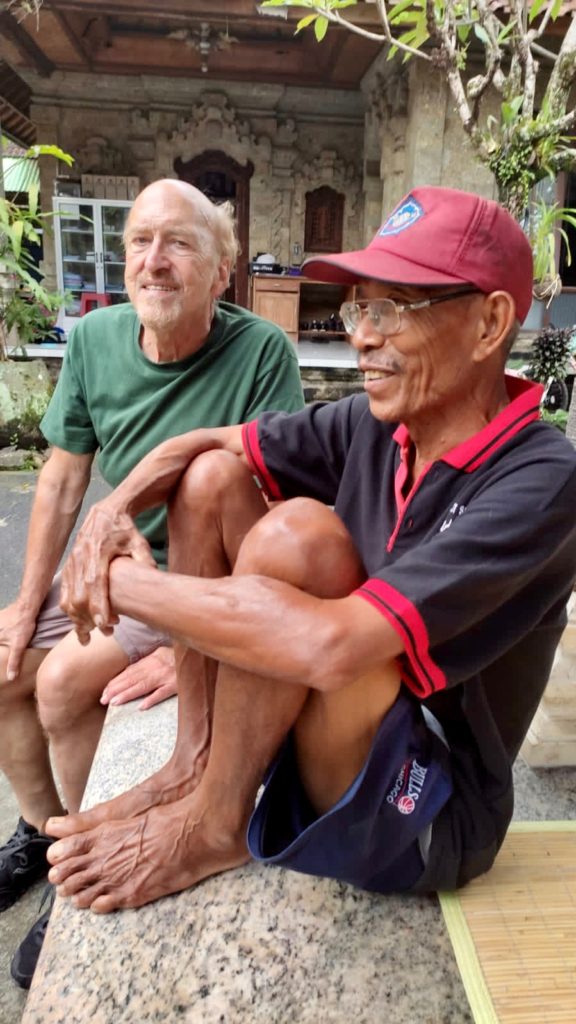
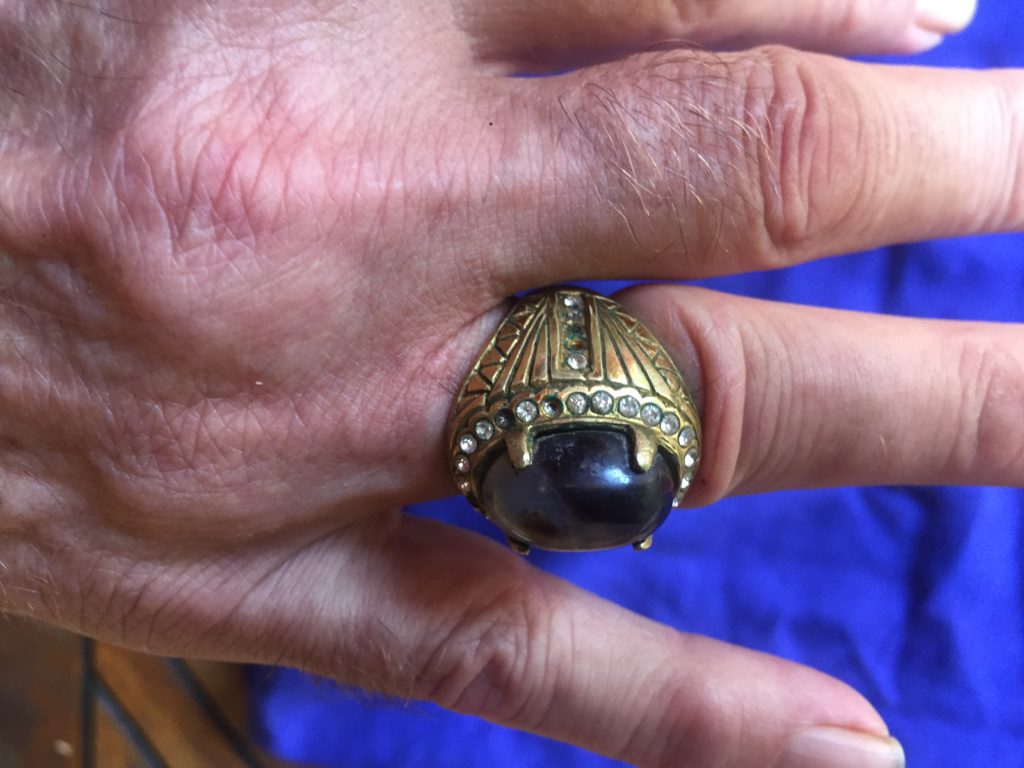
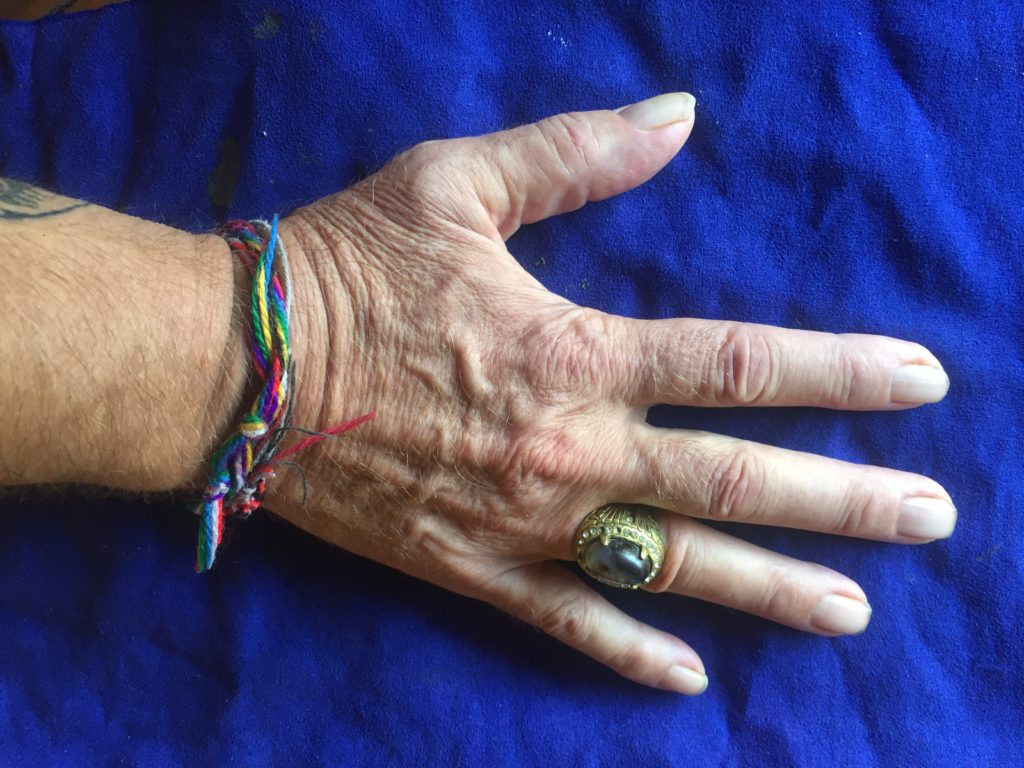
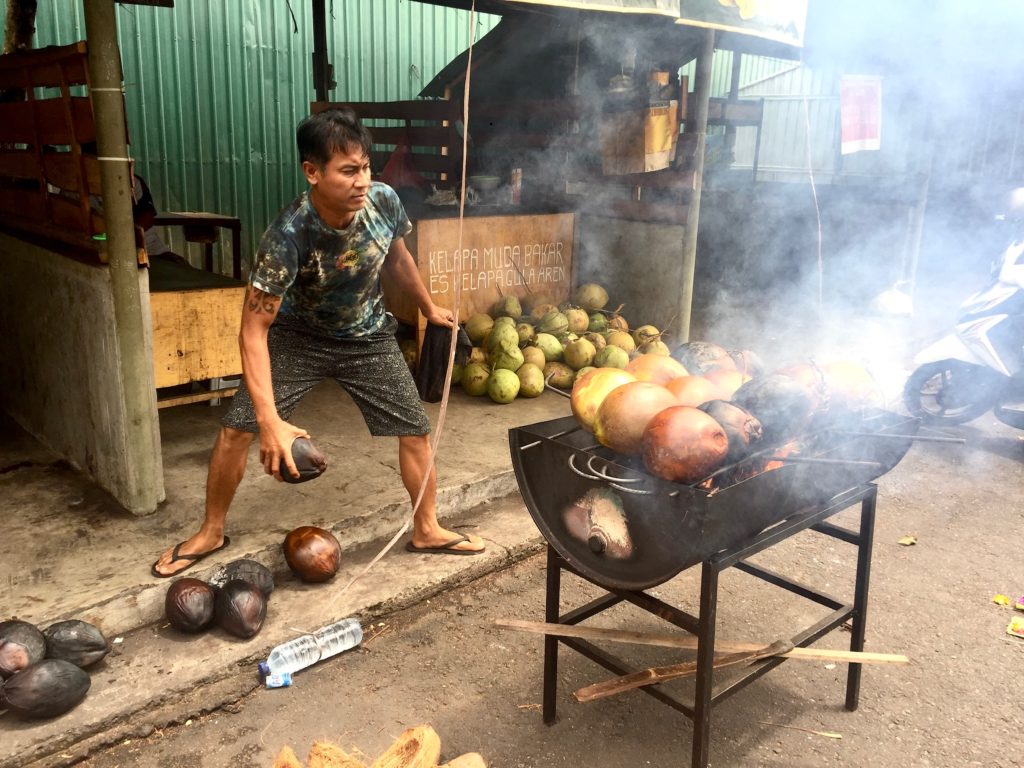
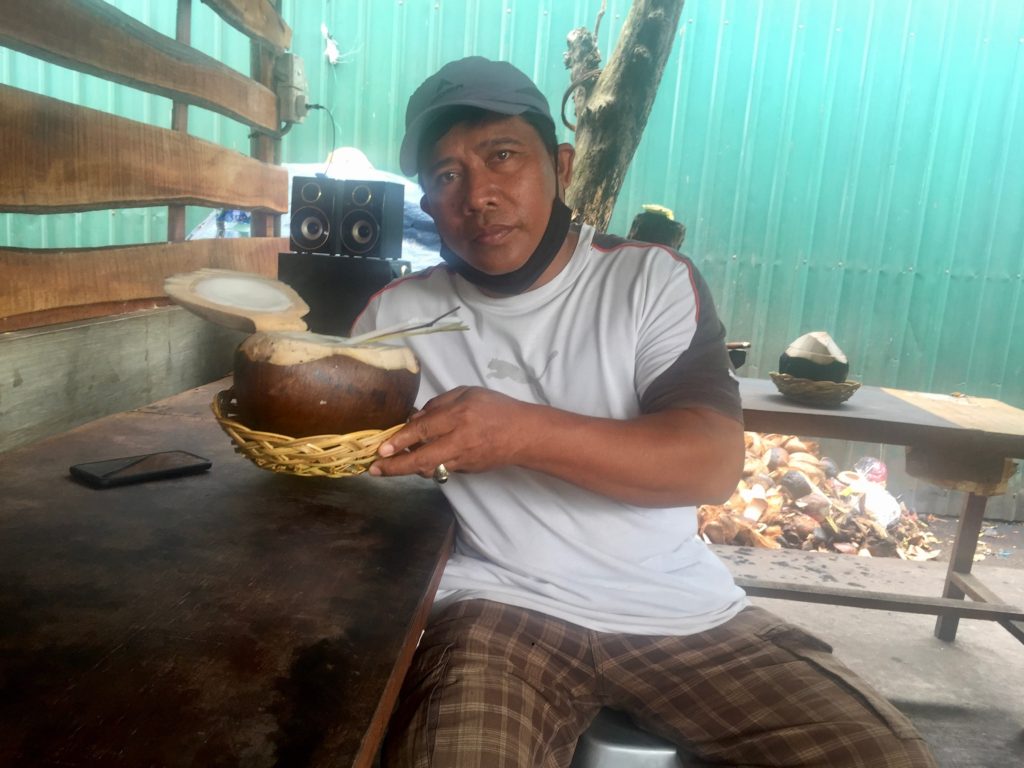
Great post!
Wow – Fascinating! I know you will be enjoying underwater yoga soon. But I am not sure about seeing you on the train tracks. This reminded me of the saunas in South Korea. One tub had an electric current. I was afraid to get into a tub of water with electricity running through it for the longest time, but finally did. It was invigorating! You are looking great!